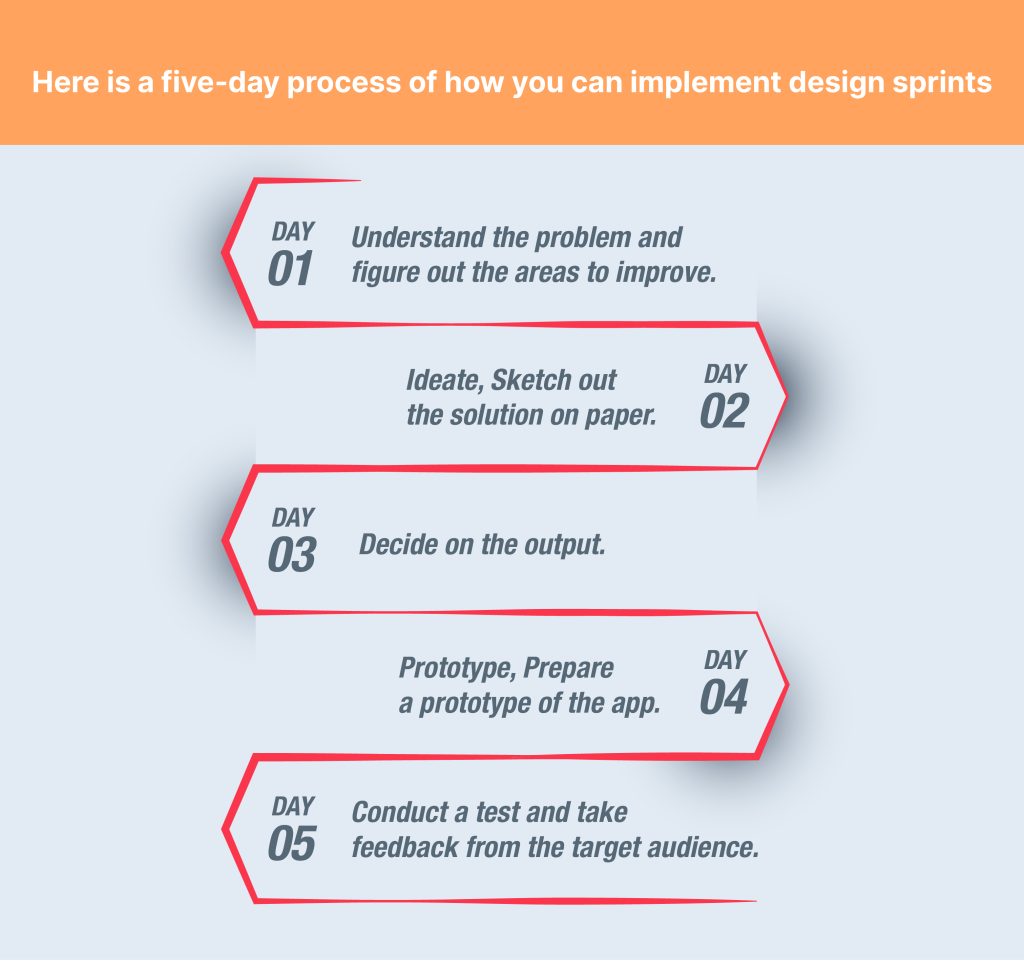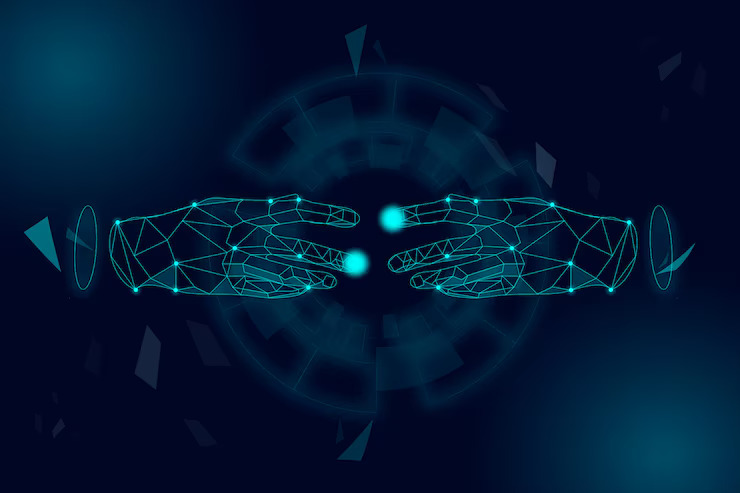BLOG
A Step-by-Step Guide to Mobile App Development Process: Part 1
Mobile app development is a complex and time-consuming process. With the right approach, you can streamline its development process and create a high-quality app that solves the problems of your target audience.
In this two-part series, we will provide a step-by-step guide to mobile app development, covering everything from ideation to launch.
Mobile App Development Process: Part 1
Ideation and Planning
Define Your App Idea
The first step in developing a mobile app is to define your idea.
What problem does your app solve?
Who is your target audience? What features will your app have? Take the time to brainstorm and create an unobstructed vision for your app.
Make sure you are not marrying the wrong idea and that your app idea solves a problem and is worth investing time and money in.
Do not just set any goals—set measurable and achievable goals.
Use these goals as a north star, ensuring you are always on your path.
Since app development is a limitless activity so stick to your goal and refrain from cluttering your app with additional features.
Here is a list of things you must do:
App Objective
Figure out why you want to build this app. Is the app needed? Who is your target audience? Is the app appropriate for your target audience? What kind of resources do you need to develop this application?
Here is a list of “SMART” objectives to follow when planning for your app:
- Specific
- Measurable
- Achievable
- Realistic
- Timely
Your goals must have Key Performance Indicators and those should be measurable.
USP of your App
Mention what are the key features of your app. What is the core appeal of your app? Why would your target audience use your application? How will you differentiate your application from your competitors?

Conduct Market Research
Once you have established your goals, next, research to make sure that there is a market need for your application.
Conduct market research to understand your competition, target audience, and market trends.
Research can help you identify potential challenges and opportunities for your app.
Here is a list of things you can do to conduct market research:
- Create Surveys
- Conduct Interviews
- Run focus group
- Competitor Analysis
- Research to improve the user experience of your app.
If your application is an addition to your existing business, then you can use your current customer base for your research.
If you are building a new application, create a focus group and find prospective users that fit your target audience.
Here’s how market research can help you with:
- It gives you a better understanding of your customers.
- You get a clear picture of your competitors and how to differentiate.
- Market research helps you to access your application before launch.
- Clearly define your marketing strategy to reach your audience.
- Identify new business opportunities.
App Features
Figure out your app’s core functionality; the features should be focused on those functionalities. Refrain from adding extra features to your app that are not needed, as they might take away your app’s primary purpose.
Here is a list of popular features, add as per your business need:
- Push notifications
- Community wall
- GPS capabilities
- Surveys and questionaries
- Video, images, and audio hubs
- Booking engine
- Calendar integration
- E-commerce carts
- Menu ordering system
- Customer loyalty
- User directory
Keep in mind to keep your as app as simple as possible.
Table of Content
- Accelerating Change: The Impact Of Mobile Applications On The Automotive Sector
- Leveraging Mobile Apps For Precision Agriculture And Crop Monitoring
- Full-Stack: The Key To Building Scalable And Agile Businesses
- A Step-By-Step Guide To Mobile App Development Part 2
- Mobile App Development: Unlocking The Power Of Technology For The Modern World
- 14 Must-Have Features For A Successful Mobile App In 2023
- The Ultimate Guide To UI/UX Transformation And Its Benefits For Businesses
Create a Wireframe
The mobile app development process requires a wireframe. A wireframe is a blueprint of your app and its features. It helps you organize your ideas and plan the user experience.
Wireframe display the design and functionality of your app. It acts as a guidebook for the developers to follow.
There are many wireframing tools available, such as Sketch or Figma, that can help you create a mock-up of your app.
The main intention of a wireframe is to focus on the structure and flow of the application and not the design elements. When preparing the wireframe map out the whole user journey.
Show in detail what happens when a user clicks a particular button.
Portray how a new page looks and what users can do on the new page. Show what happens on the screen when users get to select from multiple options.
A well-executed wireframe helps your team to be on the same page and work towards the development and implementation of your vision.
Here are a few steps you can follow while preparing a user flow and wireframe:
Set Mobile Frame
Considering your application is for multiple platforms, select the frame dimensions of the devices that you design for.
The frame dimension should act as a constraint and refrain from adding unimportant features to the screen. The frame should bring out the illusion of the actual frame design.
It is recommended to start with a mid-screen size device, and you can develop it accordingly.
Ensure uniformity of content across all devices. Make sure that the content of your application is uniformly displayed across all devices and all screen sizes.

Design Patterns
Familiarity is a critical aspect of UX design. When users feel familiar with user interface elements in your application, they remember their experience with similar apps and engage more directly at a subconscious level with your new application.
Both iOS and Android enable native design patterns that can help you facilitate your design process of creating a familiar experience. Design patterns also act as reusable content blocks and help you resolve common issues.
Here is a list of platforms to build your app’s wireframes:
Design Sprints
A design sprint is a five-day process where you validate ideas and solve big challenges through rapid prototyping and test ideas with the target audience.
Design sprints help you identify the problem and pick critical areas to focus on. It is a proven scientific process of collaborative brainstorming approach that helps in assessing what to keep and what to eliminate.
This approach helps you save development costs and time by solidifying concepts and building the groundwork for wireframing and designing.
Here is a five-day process of how you can implement design sprints:
Day 1: Understand the problem and figure out the areas to improve.
Day 2: Ideate. Sketch out the solution on paper.
Day 3: Decide on the output.
Day 4: Prototype. Prepare a prototype of the app.
Day 5: Conduct a test and take feedback from the target audience.
Here is a list of people you need for your design sprints:
Decider: A decider can be the CEO or any Senior Executive who calls the shots
Facilitator: They are the timekeeper. A facilitator keeps track of the progress during the five-day design sprint and ensures that everyone is doing their job.
Marketing Expert: A marketing expert decides how to craft the message for your target customers.
Customer Service Expert: They interact daily with customers and understand their problems and needs.
Designer: They help you turn your vision into reality
Tech Expert: They can give you an understanding of the expertise you need and what you can and cannot deliver.
Finance: They make the budget and how much you can make in return within a stipulated time limit.

Choose Your Development Platform
Once you have your wireframe, you need to decide which platform you will develop your app for.
Will it be iOS, Android, or both?
Each platform has its development requirements and guidelines, so it is important to understand these differences before you start coding.
Here are the options you have:
Native App Development
- Faster and better performance
- Better use of OS (Operating Systems) and device-specific functionalities
- Interactive & Intuitive UI/UX
- Swift configuration with zero compatibility issues.
Tech used: Java, Kotlin, Python, Swift, Objective-C, C++, and React
Progressive Web App Development
- Web-based- platform independent
- Automatic update
- Easy to maintain
- Zero storage issues
Tech: HTML5, CSS, JavaScript, Ruby, etc
Hybrid App Development
- Quick and easy to build
- Loads faster
- Lesser code to maintain
- Freedom of choosing OS
Tech: Ionic, Objective C, Swift, HTML5, Native APIs (Application Programming Interfaces), etc
Cross-Platform App Development
- Developer friendly
- Cost-effective
- Reusable code,
- Unified look across platforms
Tech: Titanium, React Native, Flutter, and Xamarin
Create a Development Plan
With your wireframe, platform, and development approach chosen, you can create a development plan that outlines the development milestones, timeline, and budget.
This plan will help you stay on track and manage your resources effectively.
Build a Team
Depending on the complexity of your app, you may need to build a team of developers, designers, and other professionals to bring your app to life. Choose team members with relevant skills and experience and create a collaborative and communicative environment.
In Part 2, we will cover the coding, testing, and launch phases of the mobile app development process. Stay tuned!
Read our case study on mobile application development:
Enhancing The Corporate Traveller’s Booking Experience with Mobile App Development
How Techspian Revolutionized The Hotel Experience: A Case Study Of Improving Hotel And Package Services
Related Topics
Trending Topics
Want to build Super app for your business?



